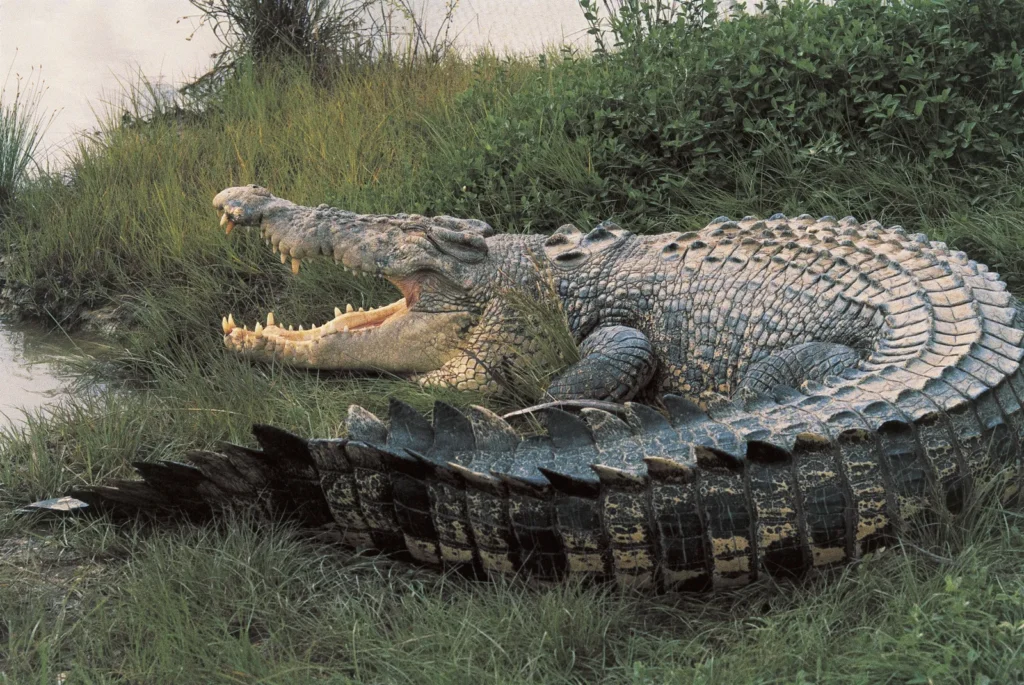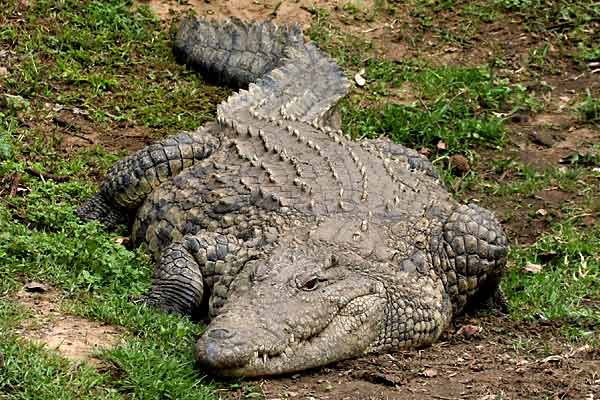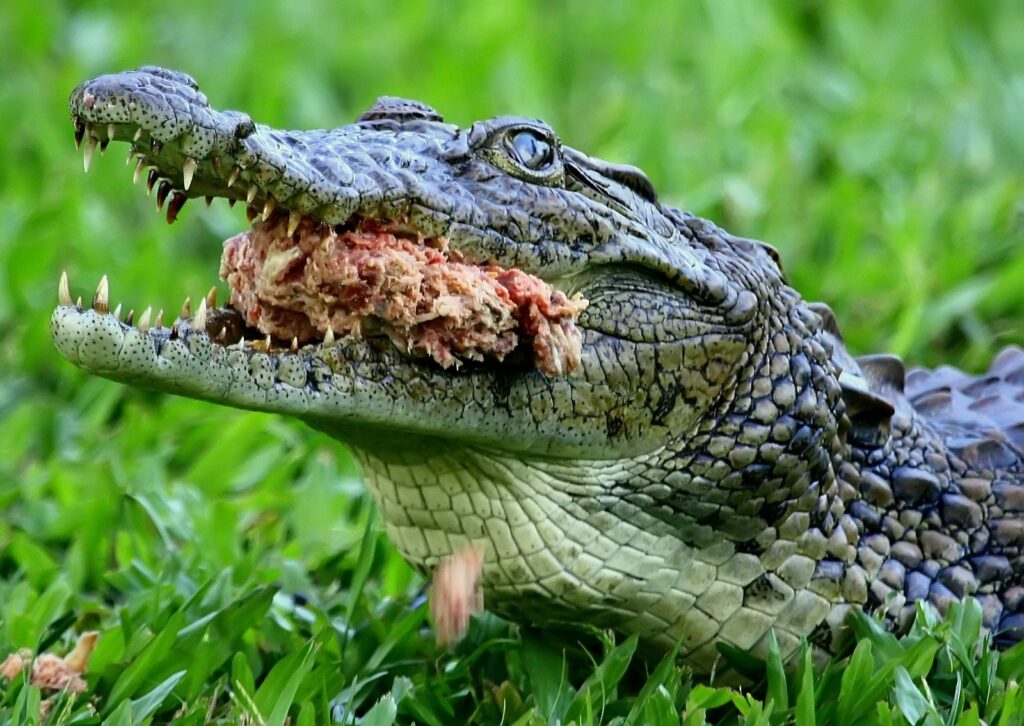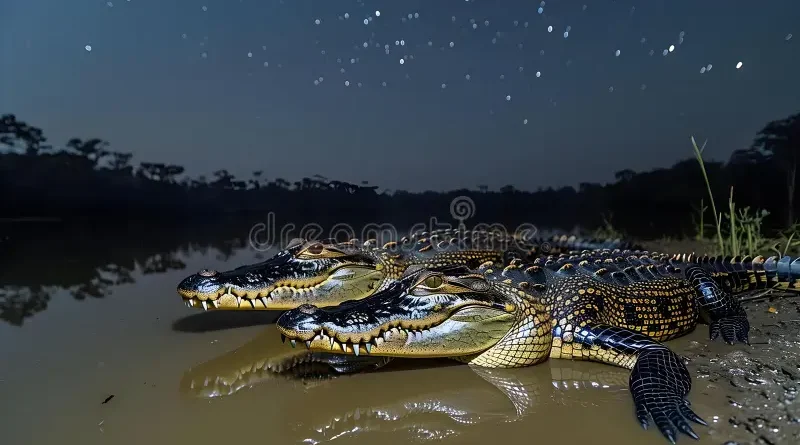Nile Crocodile Prey Availability Understanding the Key Factors
Nile Crocodile Prey Availability Understanding the Key Factors The Nile crocodile (Crocodylus niloticus) is one of the most iconic and formidable predators found in Africa’s freshwater habitats. Known for their powerful jaws, stealthy hunting techniques, and adaptability, Nile crocodiles play a crucial role in their ecosystems. Understanding prey availability is essential for comprehending the ecological balance within these environments. This article explores the factors influencing prey availability for Nile crocodiles, shedding light on their feeding habits and the challenges they face in a rapidly changing world.
Habitat of Nile Crocodiles

A. Geographic Distribution
Nile crocodiles inhabit a range of environments across Africa, primarily residing in major river systems, lakes, and wetlands. They thrive in the Nile River basin, the Zambezi River, and various other rivers and estuaries. These habitats are critical for their hunting and breeding activities, as they provide abundant prey and suitable nesting sites.
B. Seasonal Variations in Habitat
The availability of prey can fluctuate significantly with the seasons. During the wet season, rising water levels often lead to increased fish populations and other prey species, enhancing hunting opportunities for crocodiles. Conversely, in the dry season, water sources may dwindle, leading to competition among predators and a decrease in prey availability.
Here’s a table summarizing the key points about “Nile Crocodile Prey Availability”:
| Category | Details |
|---|---|
| Introduction | Overview of Nile crocodiles and importance of prey availability. |
| Habitat | – Geographic distribution in major rivers and lakes. – Seasonal variations affecting prey availability. |
| Diet | – Carnivorous diet including fish, birds, mammals, and reptiles. – Variability based on age and size. |
| Prey Availability Factors | – Environmental factors (water levels, temperature). – Prey population dynamics (reproductive rates, migration). – Competition with other predators. |
| Human Impact | – Habitat destruction (deforestation, land development). – Overfishing and consequences for prey populations. – Conservation efforts (protected areas, community involvement). |
| Seasonal Changes | – Seasonal migrations of prey species. – Effects of breeding seasons on prey populations. – Adaptation strategies of Nile crocodiles. |
| Conclusion | Importance of understanding prey availability for conservation and ecosystem health. |
| References | List of scientific articles, books, and resources for further reading. |
This table condenses the main points of the article, making it easier to grasp the essential information about Nile crocodile prey availability.
Diet of Nile Crocodiles
A. Overview of Dietary Habits
Nile crocodiles are primarily carnivorous, preying on a diverse range of species. Their diet includes fish, birds, mammals, and reptiles, allowing them to adapt to varying prey availability in their habitats. They are opportunistic feeders, often hunting whatever prey is most accessible.
B. Variability in Diet Based on Age and Size

The dietary preferences of Nile crocodiles can change depending on their age and size. Juveniles typically feed on smaller prey, such as insects and small fish, while adult crocodiles can take down larger animals, including ungulates and even livestock. This variation ensures that each life stage effectively utilizes available resources.
Prey Availability Factors
A. Environmental Factors
Several environmental factors influence prey availability for Nile crocodiles. Water levels and flow rates in rivers affect fish populations and the accessibility of prey. Additionally, temperature and weather conditions can influence the behavior and migration patterns of prey species, impacting their abundance in crocodile habitats.
B. Prey Population Dynamics
The reproductive rates of prey species play a vital role in their availability. For instance, during breeding seasons, certain fish populations may experience a surge, providing a temporary abundance of food for crocodiles. Moreover, migration patterns of fish and other aquatic species can lead to fluctuations in prey availability, requiring crocodiles to adapt their hunting strategies.
C. Competition with Other Predators

Nile crocodiles often face competition from other large predators, such as lions and hyenas. These competitors can impact the availability of prey species, as they may also target the same animals. Understanding the dynamics of predator interactions is essential for assessing how they affect Nile crocodile feeding behavior.
Human Impact on Prey Availability
A. Habitat Destruction and Its Effects
Human activities, such as deforestation and land development, have profound effects on the habitats of Nile crocodiles. The destruction of wetlands and riverine ecosystems reduces the availability of prey and nesting sites, ultimately threatening crocodile populations.
B. Overfishing and Its Consequences
Overfishing poses another significant threat to prey availability. As fish populations decline due to excessive fishing practices, Nile crocodiles face a food shortage that can affect their survival. Changes in aquatic ecosystems caused by overfishing can also disrupt the food web, leading to further declines in prey species.
C. Conservation Efforts
Conservation efforts aimed at protecting crocodile habitats are crucial for ensuring prey availability. Establishing protected areas and implementing wildlife management practices can help safeguard these ecosystems. Community involvement in conservation initiatives can also raise awareness and support sustainable practices that benefit both crocodiles and local communities.
Seasonal and Temporal Changes in Prey Availability
A. Seasonal Migrations of Prey Species
Seasonal migrations of prey species can create fluctuations in availability. For example, during certain times of the year, fish may move to spawning grounds or follow food sources, making them more accessible to crocodiles. Understanding these patterns can help predict when crocodiles will have the best hunting opportunities.
B. Effects of Breeding Seasons on Prey Populations

Breeding seasons can lead to temporary increases in prey populations, providing crocodiles with a feast. However, these increases are often followed by declines, highlighting the importance of timing for crocodiles in relation to prey availability.
C. How Nile Crocodiles Adapt to Changing Prey Availability
Nile crocodiles have evolved various strategies to adapt to changing prey availability. These include altering their hunting techniques, modifying their feeding habits, and, in some cases, migrating to areas with more abundant food sources.
Conclusion
Understanding prey availability is essential for the conservation of Nile crocodiles and the health of their ecosystems. As human activities continue to impact habitats and prey populations, it is crucial to prioritize conservation efforts to maintain ecological balance. By safeguarding the habitats of Nile crocodiles and their prey, we can ensure the survival of these magnificent reptiles and the biodiversity of their environments.
References
Note: This section should include a list of scientific articles, books, and other resources used for research to provide credibility and further reading opportunities.
Feel free to modify any sections or add references as needed!
Tips for Understanding Nile Crocodile Prey Availability
Research Local Ecosystems:
- Study the specific habitats where Nile crocodiles are found, including rivers, lakes, and wetlands. Understand the types of prey available in these environments and how seasonal changes affect their abundance.
Monitor Seasonal Changes:
- Keep track of seasonal variations in water levels, temperature, and rainfall. Note how these changes influence the behavior and migration patterns of both crocodiles and their prey.
Observe Prey Species:
- Pay attention to the populations of prey species, such as fish and birds, in crocodile habitats. Observing their breeding and migration patterns can provide insights into when prey is most available.
Study Crocodile Behavior:
- Observe how Nile crocodiles adapt their hunting strategies based on prey availability. Note their hunting techniques, times of day they are most active, and their interactions with other predators.
Promote Conservation Efforts:
- Support local conservation initiatives that protect crocodile habitats and their prey. Engage in community programs aimed at preserving wetlands and sustainable fishing practices.
Educate Others:
- Share knowledge about the importance of prey availability for Nile crocodiles with others. Encourage discussions on ecological balance and the impact of human activities on these species.
Participate in Ecotourism:
- Engage in ecotourism activities that promote responsible wildlife observation. This helps raise awareness about crocodiles and their prey while contributing to local conservation efforts.
Stay Informed on Regulations:
- Familiarize yourself with local regulations regarding wildlife conservation and fishing practices. Follow guidelines that protect crocodile habitats and ensure sustainable practices.
Document Observations:
- Keep a journal of your observations related to Nile crocodiles and their prey. Documenting changes over time can help contribute to ongoing research and conservation efforts.
Support Research Initiatives:
- Consider supporting or getting involved in research projects that focus on crocodile ecology and prey availability. Contributions can help scientists gain a better understanding of these animals and their habitats.
FAQs on Nile Crocodile Prey Availability
What is the primary diet of Nile crocodiles?
- Nile crocodiles primarily eat fish, but they are opportunistic carnivores and will also prey on birds, small mammals, and reptiles. Their diet can vary based on their size and the availability of prey in their habitat.
How does seasonal change affect prey availability for Nile crocodiles?
- Seasonal changes, such as fluctuations in water levels and temperature, can significantly impact the availability of prey. During the wet season, higher water levels can lead to increased fish populations, while the dry season may limit prey availability.
What factors influence the population dynamics of prey species?
- Factors such as reproductive rates, migration patterns, and environmental conditions (e.g., water quality, temperature) play crucial roles in the population dynamics of prey species available to Nile crocodiles.
How do Nile crocodiles adapt to changes in prey availability?
- Nile crocodiles are highly adaptable and may alter their hunting techniques, modify their feeding habits, or move to different areas to follow prey migrations when food sources become scarce.
What human activities impact the prey availability of Nile crocodiles?
- Habitat destruction (e.g., deforestation, land development), overfishing, and pollution can significantly reduce the availability of prey species and disrupt the ecosystems in which Nile crocodiles live.
Are Nile crocodiles at risk due to declining prey populations?
- Yes, declining prey populations can threaten Nile crocodile survival by limiting their food sources. This can lead to increased competition among crocodiles and other predators, impacting their overall health and reproductive success.
What conservation efforts are in place to protect Nile crocodiles and their prey?
- Conservation efforts may include establishing protected areas, promoting sustainable fishing practices, and engaging local communities in wildlife management to safeguard both crocodiles and their habitats.
How can I safely observe Nile crocodiles in their natural habitat?
- To safely observe Nile crocodiles, consider joining guided ecotourism tours that prioritize responsible wildlife observation. Always maintain a safe distance, respect local regulations, and avoid disturbing the animals.
What role do Nile crocodiles play in their ecosystems?
- Nile crocodiles are apex predators and play a crucial role in maintaining the balance of their ecosystems. By controlling prey populations, they help sustain healthy aquatic environments.
How can I support conservation efforts for Nile crocodiles?
- You can support conservation efforts by donating to wildlife organizations, participating in community conservation initiatives, spreading awareness about crocodile conservation, and practicing responsible eco-friendly behaviors.
